Since moving to the UK, I’ve become accustomed to stinging nettles. They grow very vigorously, as a weed, and have runner roots just under the surface which spread out everywhere and result in new nettles. They’re hard to get rid of and their leaves really do create an unpleasant sting.
One thing I’ve found is that they love ground that has been dug up. In general, if grass is well in control, stinging nettles don’t have a chance. Once the ground is disturbed, stinging nettles can grow quite tall very quickly and dominate the grass, but if the grass is already there, stinging nettles can’t compete.
My Stinging Nettle Problem
When we had our pottery studio built including new steps down to the studio, there was a lot of ground disturbed and then relocated. This was just perfect for the stinging nettles and they took over. Since I hadn’t experienced them before, I wasn’t sure what to do. I tried pulling them out by hand, using a garden fork and some good leather gloves, and I found they were easy to remove because the roots are generally shallow. They don’t like being pulled out and it takes them quite a while for them to start returning, but they do return and, in summer, they grow very vigorously. At one point I was confronted with stinging nettles between 4 and 5 feet tall.
At one point, I asked a professional gardener how I could get rid of them and he said the only way was Roundup! There’s no way I’d put Roundup in my garden as I’m trying to stay close to organic and I don’t want to stress the wildlife.
I kept reading online to look for suggestions and I found somewhere the advice that keeping the area regularly cut can work, because grass doesn’t mind being cut but the nettles really don’t like it. If the area is kept short, the grass will gradually get stronger and stronger and the roots of the stinging nettles will eventually die.
This is definitely worth a try from my point of view. There’s no downside, just that it might not work. Below, I’ve documented what I’ve done in the form of photos with captions, but here’s a sneak preview of the comparison between September 2018 and November 2019 (and yes, I had a greenhouse installed during that time). It really does look like it’s working, but I bet I’ll have to diligently keep the area cut for the next year or two, to be sure.
The Stinging Nettle Story in Pictures
Click on any of these photos to see them full-size.
Conclusion – Stinging Nettles – taking up the fight
I’m happy to see that this approach appears to be working. As each month has gone by, I can notice that the grass is moving in more and more. Keeping the area cut with a scythe is quite easy and the resulting organic matter is great for the garden. I’m wondering if diligence through next spring and summer will be enough to see the back of stinging nettles in this area. I’ll keep you posted next year.
Related Links – Stinging Nettles
- Nettles – some information from the RHS
- Rainwater Tank – Saving Water
- Hartley Greenhouse – the good and the bad
- Rows and rows of windrows
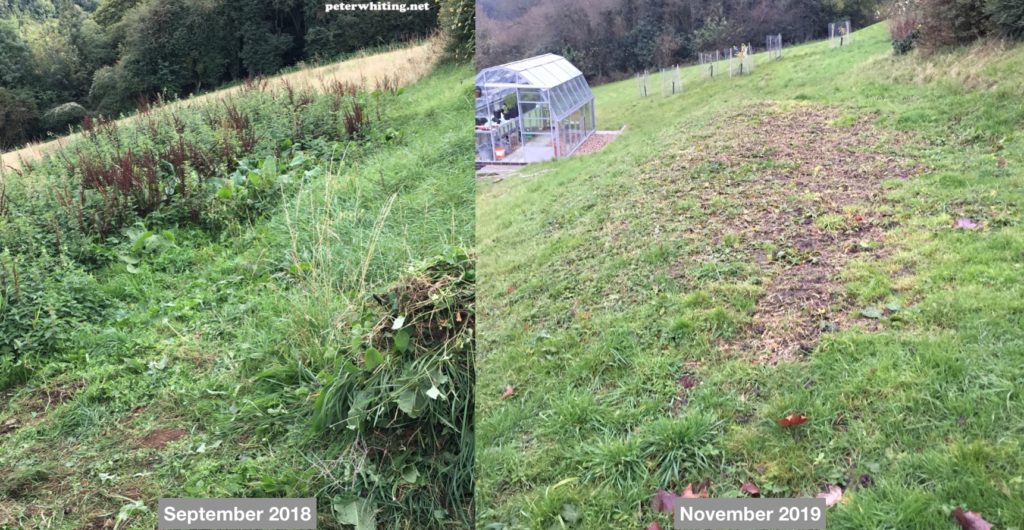
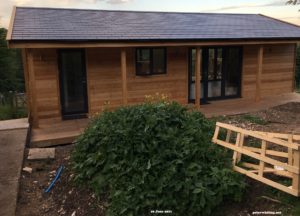
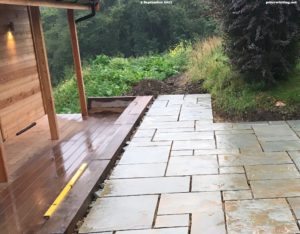
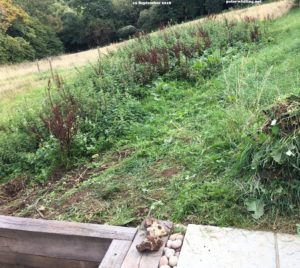
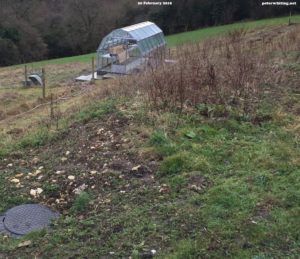
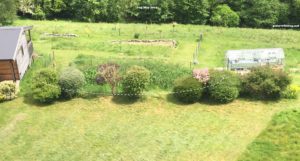
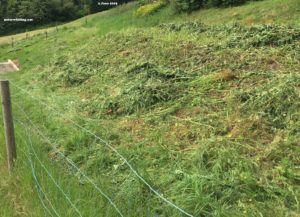
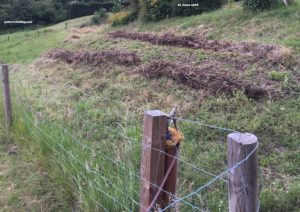
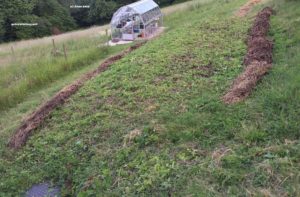
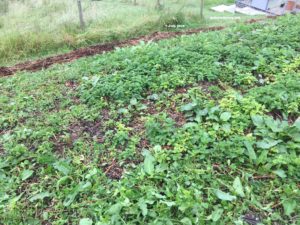
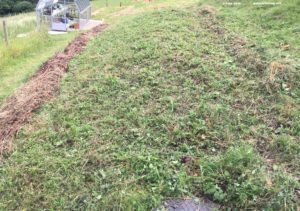
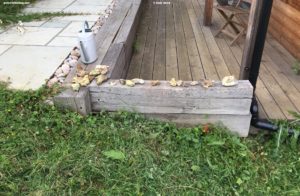
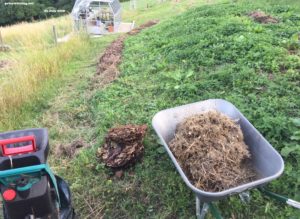
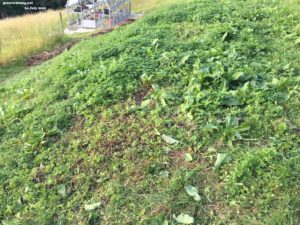
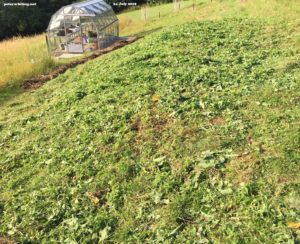
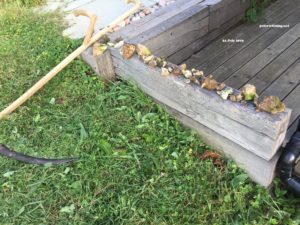
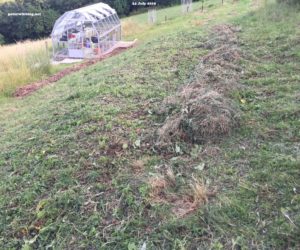
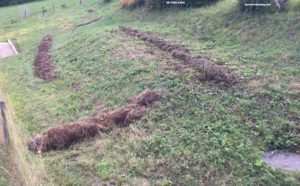
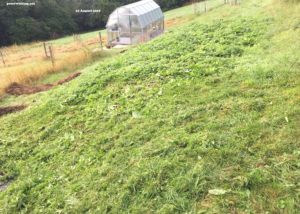
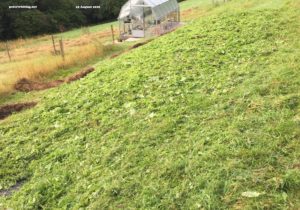
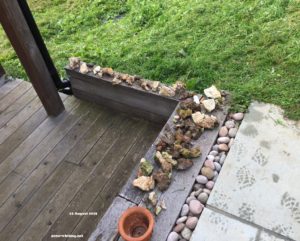
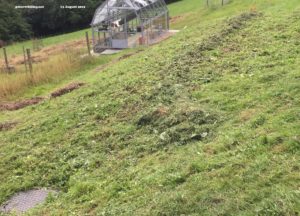
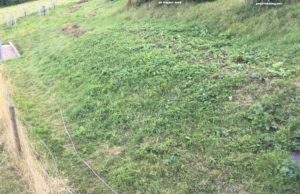
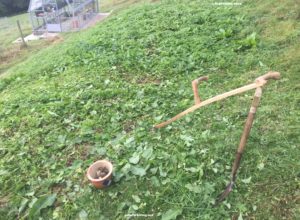
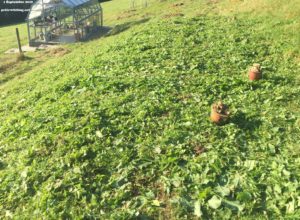
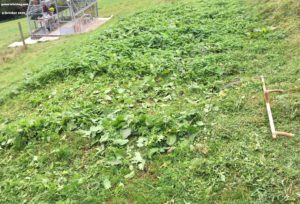
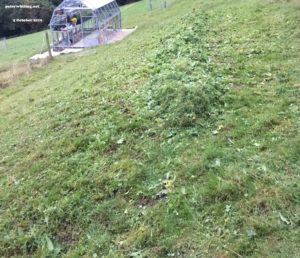
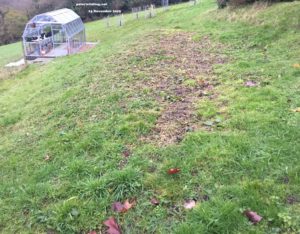
Hello Peter, I need to read this properly and haven’t had the time but I should say I leave an area of nettles in my garden as the butterflies love them and since I’ve let the area get a bit bigger I see so many more butterflies. Happy Christmas to you both and looking forward to seeing you both soon. With love Sue
Hi Sue – Yes, I’ve had that comment from a couple of people saying that keeping stinging nettles is good for the wildlife, and I’m sure that’s very true. I still have stinging nettles in various places that can be a bit wilder, but I really don’t want stinging nettles in the area I’ve discussed in this article. I do want to create a garden that’s quite natural and good for all types of wildlife, so I’ll keep in mind the value of some stinging nettles here and there. Looking forward to see you too. Peter.
Interesting but why should a house be named Nettle House? Or is because Mr Nettle lived there? Has it any agricultural connection?
Hi Elizabeth,
Can’t say why a house should be called “Nettle House”. Nettles aren’t all bad, or course, as they’re commonly used to make tea and all of the animal critters are quite happy with a wild nettle patch.
Best Wishes,
Peter.